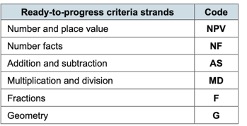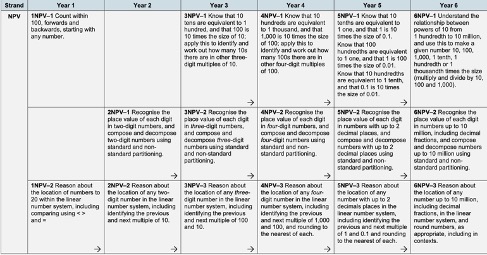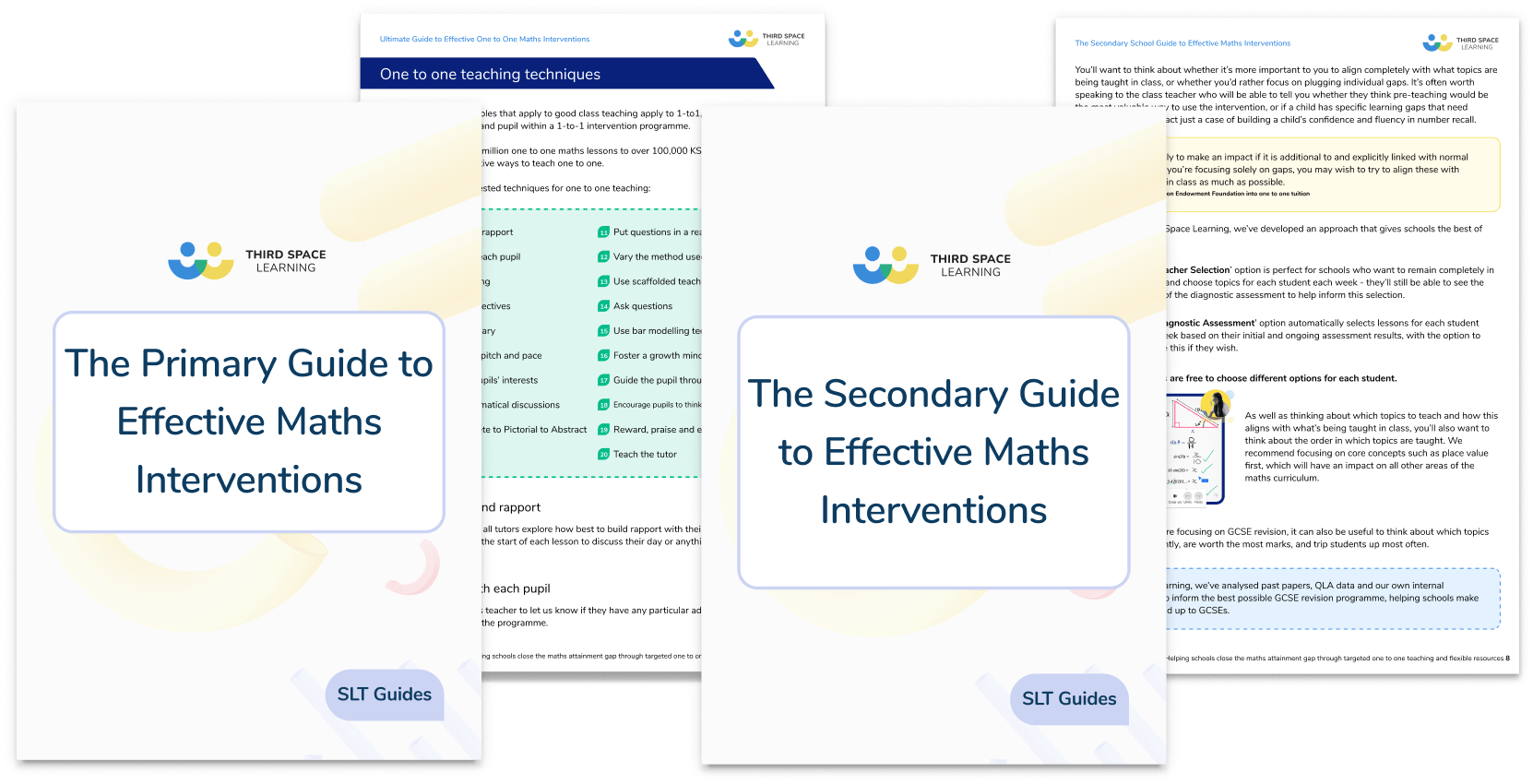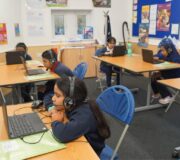How Can We Deliver A Fair Maths Curriculum For All When Pupils Are Learning Remotely?
Schools across the country have once again moved to online and remote education in the wake of the national lockdown, and teachers are rising to the challenge of supporting and teaching their pupils as effectively as possible during this time.
The government has advised that schools should ‘teach a planned and well-sequenced curriculum so that knowledge and skills are built incrementally so that pupils can progress through the school’s curriculum’, with ‘frequent, clear explanations of new content, delivered by a teacher or through high-quality curriculum resources’.
Ofsted have also announced that they plan to continue their visits to check on the quality of education in schools.
Here we take a look at some of the challenges surrounding the provision of high quality maths education online, particularly the effect remote learning has on the most disadvantaged pupils.
As in the early wave of the coronavirus pandemic when schools last closed, our focus at Third Space Learning has been to ensure as many pupils as possible can continue to benefit from their weekly online maths tuition during this time.
The Ultimate Guide to Maths Tutoring
A guide on how to choose, plan and fund the right tutoring approach for your students for maximum impact in your school.
Download Free Now!For some pupils this means they continue to receive tuition in school (as planned); for others they’re now receiving their one to one sessions at home during the national lockdown. For the most part, when the school can assist at their end, we’ve been able to make it work; but there are always challenges along the way.
There is no single way to provide remote learning in maths
As a result of this we’re talking to hundreds of school leaders every week about the options for their pupils’ maths tuition. One of the topics that comes up often in these discussions is how schools are managing their remote maths teaching, and in particular the type of content they’re teaching.
In an ideal world, remote learning wouldn’t impede teachers’ progress through the curriculum and they’d be able to carry on as normal, but clearly it’s not quite as simple as that.
While most schools, encouraged by the government, are planning to press ahead with teaching new content as they usually would others others are looking at a more reduced curriculum or simply focusing on revision and consolidation.
In this article we’ll be looking into these discussions and exploring some of the issues for teachers and school leaders.
As ever the answer isn’t a simple one. Like so much of your school’s curriculum and ethos, it depends very much on your school context and what you believe your vision as a school is.
Closing the attainment gap during a pandemic
At Third Space Learning, we are very clear about our vision; it’s to support schools to close the attainment gap in maths by providing pupils with one to one tuition delivered online. The schools we work with share this vision and are often the schools who serve the more deprived communities.
It is well known that students who are at a socio-economic disadvantage on average perform worse than those that are more privileged, and it is particularly stark in maths.
Unfortunately, the coronavirus pandemic has served to widen this attainment gap and has set back the progress that has been made over the past 5-10 years in narrowing the gap.
According to the EEF Rapid evidence assessment on the impact of school closures on the attainment gap, effective remote learning may mitigate the gap, but sustained support will be needed.
The National Tutoring Programme is one of the ‘sustained support options’ introduced by the government and we are extremely proud to be a part of it. But only 26 of the Programme’s Tuition Partners – including Third Space Learning – are approved to deliver tuition online at home during this period of school closures.
So a lot of additional support options for children and schools are simply not available during school closures.
[Editor’s note: Schools are very far from closed right now, but we use this term to distinguish from periods of lockdown when schools remain fully open]
What does effective remote learning look like?
We know there’s a real responsibility on educators to use the remote learning period effectively. It is not just about keeping children busy so their parents can work.
The longer it lasts, the more we all feel the imperative to ‘get through the curriculum’, however hard it is to manage.
And for schools teaching children from more socio-economically disadvantaged backgrounds, the impact on children’s progression will be seen more widely.
We would be wrong to tell you either what or how to teach. You know your children and your context best and we have full confidence that leaders are doing the best for their setting.
What we can do here is give you some thoughts to help guide your thinking. When you’re looking at your remote learning provision in maths, these are the considerations that will maximise the attainment gains for your most disadvantaged students.
Here we look at three key considerations and the impact they may have on your remote education. At the end we offer some thoughts around how you can continue learning for all without widening the gap or holding back your higher attainers.
1. Access to technology
Possibly the biggest challenge facing the more disadvantaged children is their access to technology, the internet, and a quiet place to work.
Indeed, in its summary report on distance learning, the EEF writes:
‘Ensuring access to technology is key, particularly for disadvantaged pupils
Almost all remote learning uses digital technology, typically requiring access to both computers and the internet. Many reviews identify lack of technology as a barrier to successful remote instruction. It is important that support is provided to ensure that disadvantaged pupils – who are more likely to face these barriers – have access to technology.’
Until all the laptops requested by schools have been distributed we have to work from the premise that not all your class will be able to access the work you are setting online. This is as true whether you are teaching with live video, asynchronous video, via Oak National Academy or even just with downloadable PDFs. And it is not just the children in your schools who receive free school meals who will have difficulty accessing online content.
This means that as soon as you start teaching new content you risk the likelihood that those children in your class, who were already starting at a disadvantage, will be unable to access this new content. As a result, on their return to school, they will be further behind.
Mitigate with technology and training
Clearly the way to mitigate this issue is firstly to provide the technology (as well as any other support the family may need), but that’s not enough. Children and teachers need to also understand how to use the technology.
If your school has been lucky enough to source laptops for all your pupils then your school also needs to look at supporting their teachers and pupils to interact with the new technology and online platforms. Often it’s the teachers who are most lacking in confidence here.
Poor usage of the technology can often be as big a barrier to learning as a lack of it.
2. Fundamental challenges of remote education
Remote education, whether video or paper based is a more challenging teaching method when you’re doing it for a class of 30 than face to face.
It lacks the advantages that schools report from the Third Space Learning one to one online tutoring, which blends the engagement and convenience of online with the personalisation of one to one.
Some of the challenges of remote education are highlighted in Ofsted’s recent publication ‘What’s Working Well in Remote Education’. They include
- it’s harder for pupils to concentrate when being taught remotely even if they’re on topic
- some topics in maths and other subjects are just harder to teach to a group remotely
- it can be harder – although not impossible – to deliver immediate feedback to pupils than in class
- there are more distractions at home, whether that’s YouTube or siblings
How to adapt your maths curriculum accordingly
Maths as we know is a hierarchical subject with each concept building on the one before. However it’s also cyclical to the extent that during a child’s time at primary they will revisit many concepts year after year. Each year the principal concept remains the same but the complexity increases and children work with larger numbers.
Many of the schools we’re speaking to are now looking at their short and medium term plan in maths and deciding to simplify any of the curriculum during this period. Are there some topics that you could leave for now and return to in the summer or next year during a period of face to face teaching?
Reviewing and revising previously learnt content is a valuable part of the learning journey. Remote learning could in fact be the perfect opportunity to consolidate existing knowledge given it is much easier to deliver retrieval and foundation activities online than actual teaching moments.
How many teachers would not call it a successful block of learning, if by the end of your pupils’ period in lockdown they are secure in all the learning targets from the previous year? On their return they would be ready to make the additional leaps for the higher cognitive demands of this year’s content.
3. Mixed ability teaching and widening the gap
However gloomy it may feel now, these school closures won’t last all year. With luck, the period of remote learning will be much shorter than in 2020 and you’ll be back in the classroom by the summer term at the latest.
And when you’re back, you’re likely to be returning to maths lessons with mixed ability grouping as part of a maths mastery approach.
If you’re following this approach, the best way to progress faster and further with your class is to keep them, as far as possible, within a similar attainment range.
That means that whenever we do return to school, if you have been teaching a lot of new content during lockdown, you’re more likely to find the gap between the top and bottom of your class exacerbated.
Some children might not have been able to learn anything new; others will have been able to attend every online lesson, watch every video and complete every worksheet. This means much of the differences you see will have nothing to do with a child’s ability or willingness to learn, just their access to the teaching.
The medium to long-term effects of this are that when pupils are finally able to return to the classroom, their teachers will have a cohort with a wider attainment-gap than before, making day-to-day classroom teaching even more difficult.
A consequence of this is that time will then be spent teaching half the class the content that was missed during lockdown. Meanwhile the other half of the class – who have learnt the new content already – get even further ahead and deeper into the topic.
Alternative approach: focus on the fundamentals
From speaking to our schools recently, it’s clear that many are reconsidering their ambitions for this period and focusing almost exclusively on securing foundations in maths. It is after all rare to teach a class where all children have their number facts completely.
Without secure understanding of these foundations, progress for any child becomes difficult. They will stall on any cognitively demanding activities as their precious working memory is spent on number bonding within 20 or recalling timetables. This is at the expense of using their working memory to solve more complex problems and learn new content.
Read more: Cognitive Load Theory In The Classroom
Place value and number fluency are the core building blocks of maths. Lockdown is the perfect opportunity to ensure students have this core knowledge at the tip of their fingers.
This would not only make the teaching of any outstanding missed curriculum content quicker for the class on their return, but it would also make it more enjoyable for those students who do struggle.
Without equal access to technology (and thus without your full class present for the teaching moments), or supplementary online maths interventions like Third Space Learning, the fairest option might be to use lockdown to deepen pupils current learning with a revision approach rather than teach new content.
This way you won’t find yourself leaving a sizeable number of the class behind.
What could ‘revision’-based online learning look like?
If you do decide to limit the amount of new content you teach, the NCETM non-statutory guidance on mathematics is one of the best places to start.
The guidance provides an overview of ‘ready to progress’ criteria across all year groups.

These ready to progress criteria are ideal targets for your remote learning.
Year 2 Place Value Example
The example below shows their guidance to the progression of certain objectives within number and place value.

Teachers could use this, along with assessment data that they already have about students to purposely target the highest leverage objective that they think students really should be secure on so that students can move on and progress quickly when they return to school.
Assume that a Year 2 teacher has decided to work on Place Value with her students so that all students are really secure on this when they return.
The summary chart clearly sets out what children should be secure on and then the individual year group guidance offers more detail including:
- various ways that this could be taught
- what manipulatives and diagrams support the learning that you want to take place and a language focus to ensure deep understanding of mathematical vocabulary
- assessment style questions that you could provide for students online through a Google quiz
The guidance is comprehensive and could form the backbone of your teaching ambitions for lockdown.
It can then be used in tandem with maths resources and enrichment or extension activities which “provide a valuable learning experience but, [do not] move them on to new mathematical ideas.”
Finding the right balance for your pupils
Remote education, and online learning is not the same as face to face teaching in class, and teachers have had to adapt heroically to embrace this new pedagogy.
What we’ve tried to do in this article is provide some thoughts about how you might weigh up the ‘what and how’ in your maths teaching over the coming weeks, particularly in the context of the most disadvantaged children.
As time goes on, access to technology (and even, perhaps free internet access) may widen and you can be more confident about covering new ground online but right now, being open to a plan B – a revision and consolidation plan – seems to be a sensible and fair approach being taken by many schools.
How Third Space Learning can help
At Third Space Learning, we’ve been teaching online lessons for 7 years and we continue to improve and evolve our own lesson resources and materials as we go.
One of things that makes our online tuition so popular is that it can be used in whichever way each school feels best. Some schools use the lessons as a pre-teaching tool, others use it to consolidate what has been taught in class. Others prefer to use our in-built diagnostic assessment to automatically select which lessons to plug each pupil’s individual gaps.
During periods of remote learning, many of our schools have been able to use Third Space Learning to ensure those pupils who need it most are still able to continue learning new content and to progress through the curriculum alongside their peers:
“Our focus for the pupils during lockdown has been consolidation. We’ve been uploading work for the children throughout, but we haven’t been focusing on teaching new content because it’s not really fair on the parents. But with Third Space Learning, we can actually have them learn new concepts. They have their tutor there to help them, it’s not reliant on the parents and it’s being taught one to one.”
– Kevin Presneill, Deputy Headteacher, Brompton Westbrook Primary School, Gillingham, Kent
You can learn more about our intervention programmes here. As an approved Tuition Partner of the National Tutoring Programme, your school may be eligible for subsidised spaces that can take place from pupils’ home during school closures. Let us know how many pupils you’re looking to support here and we’ll be in touch with a quote and more information on how we can help.
DO YOU HAVE STUDENTS WHO NEED MORE SUPPORT IN MATHS?
Every week Third Space Learning’s maths specialist tutors support thousands of students across hundreds of schools with weekly online maths tuition designed to plug gaps and boost progress.
Since 2013 these personalised one to one lessons have helped over 150,000 primary and secondary students become more confident, able mathematicians.
Learn how we can teach multiple pupils at once or request a personalised quote for your school to speak to us about your school’s needs and how we can help.





